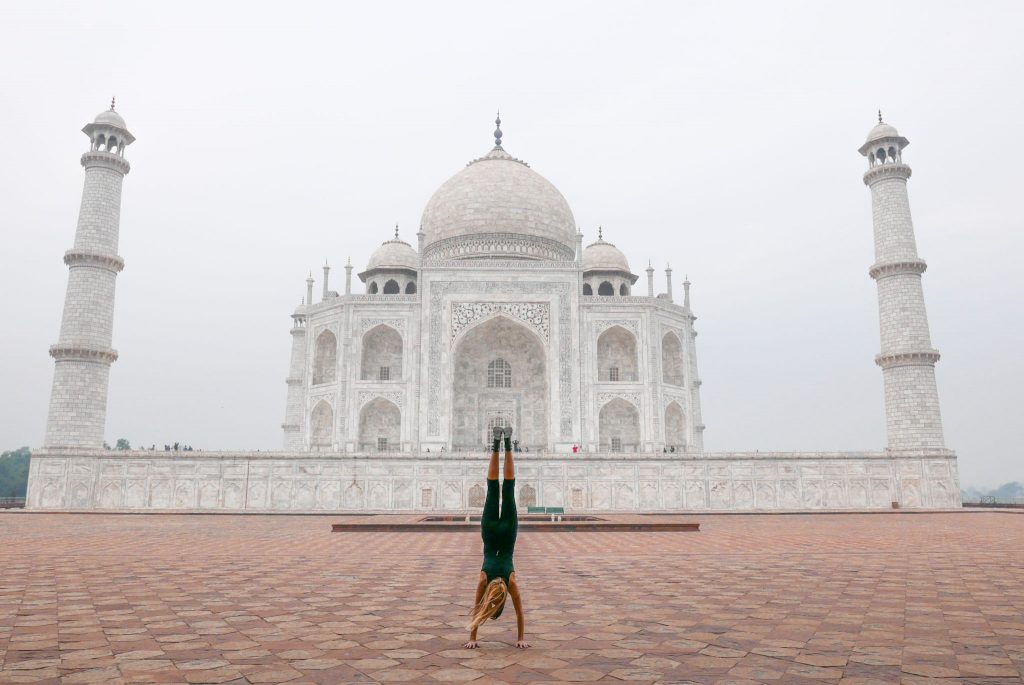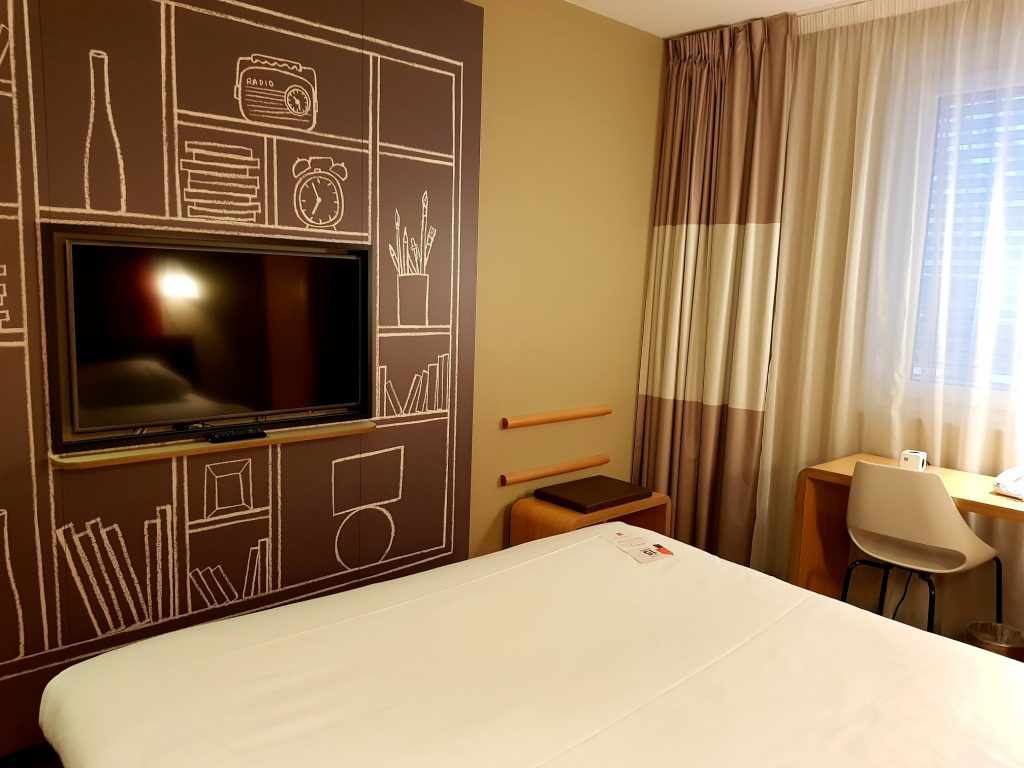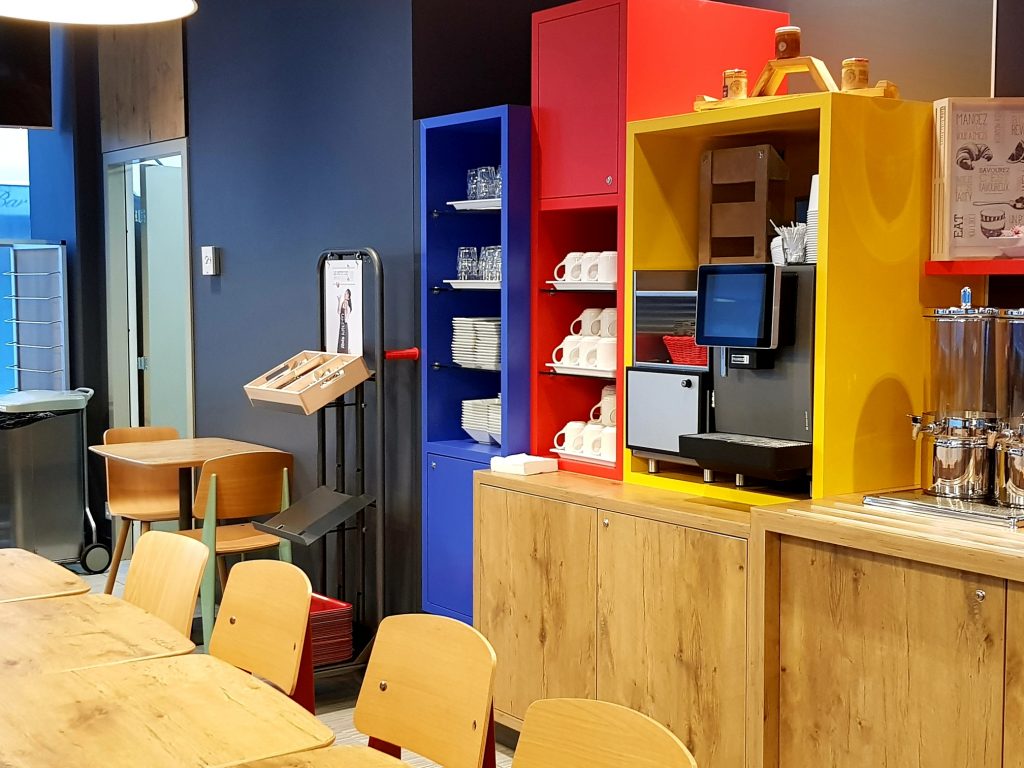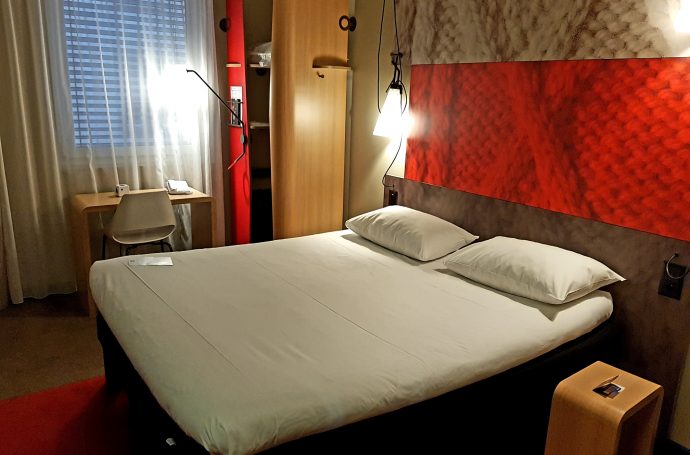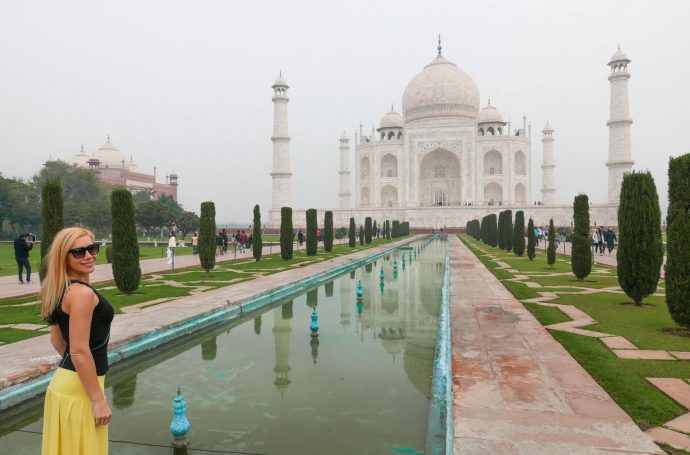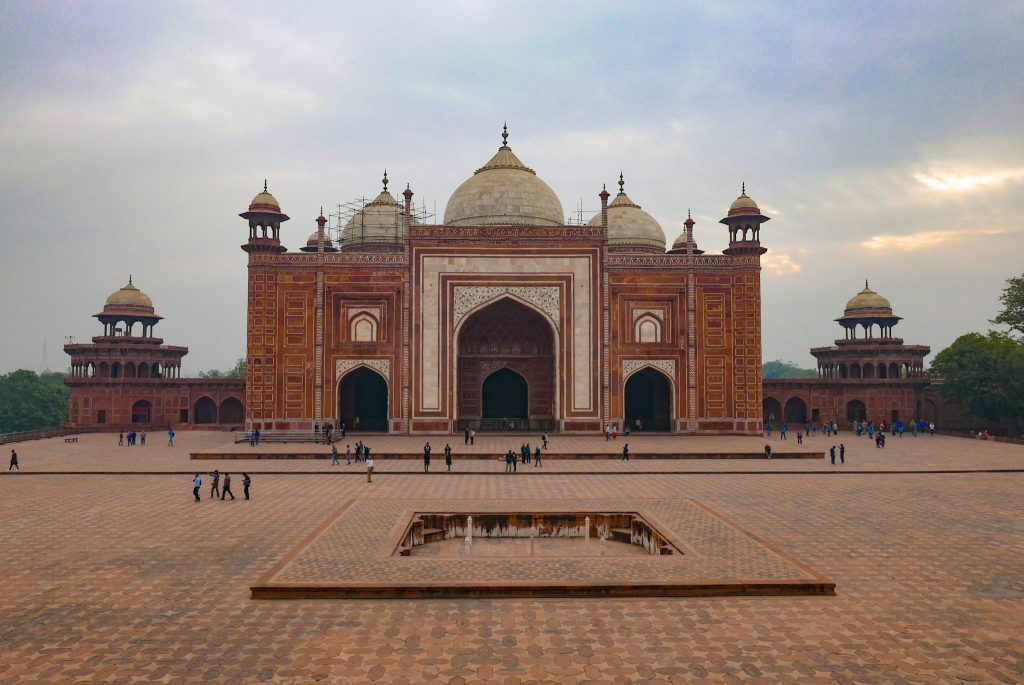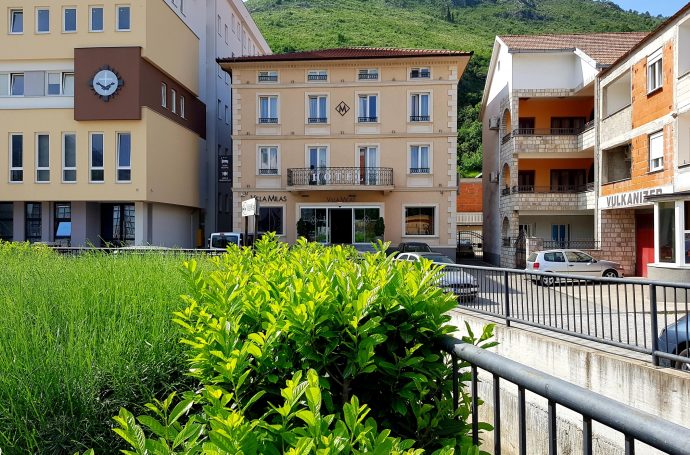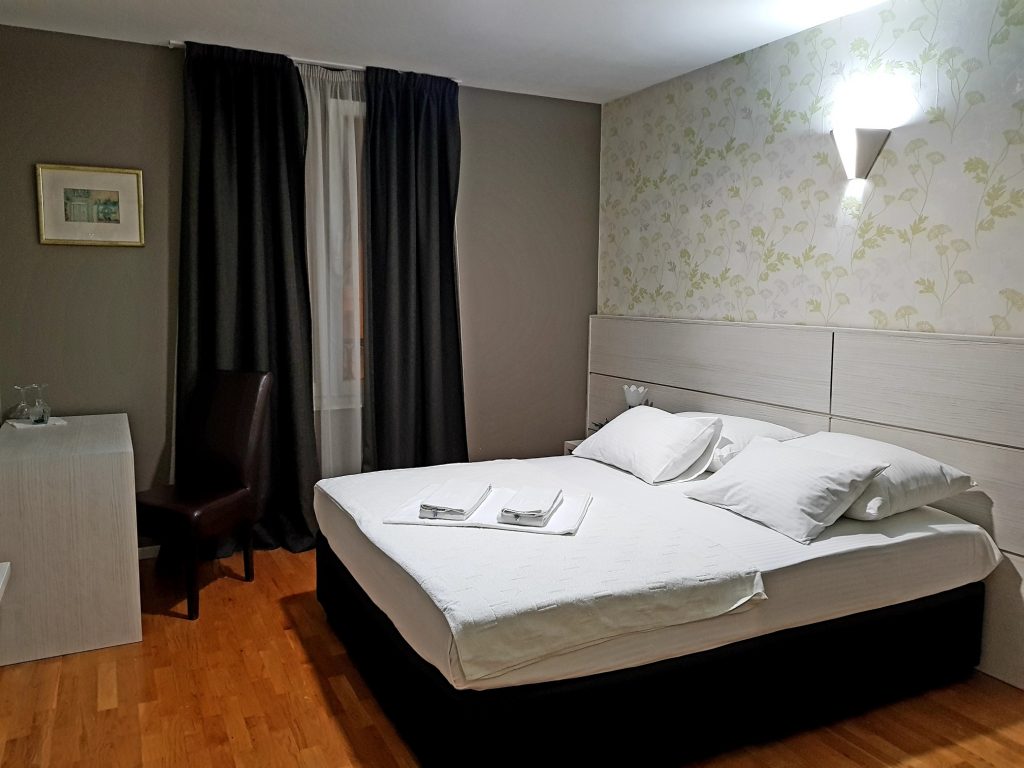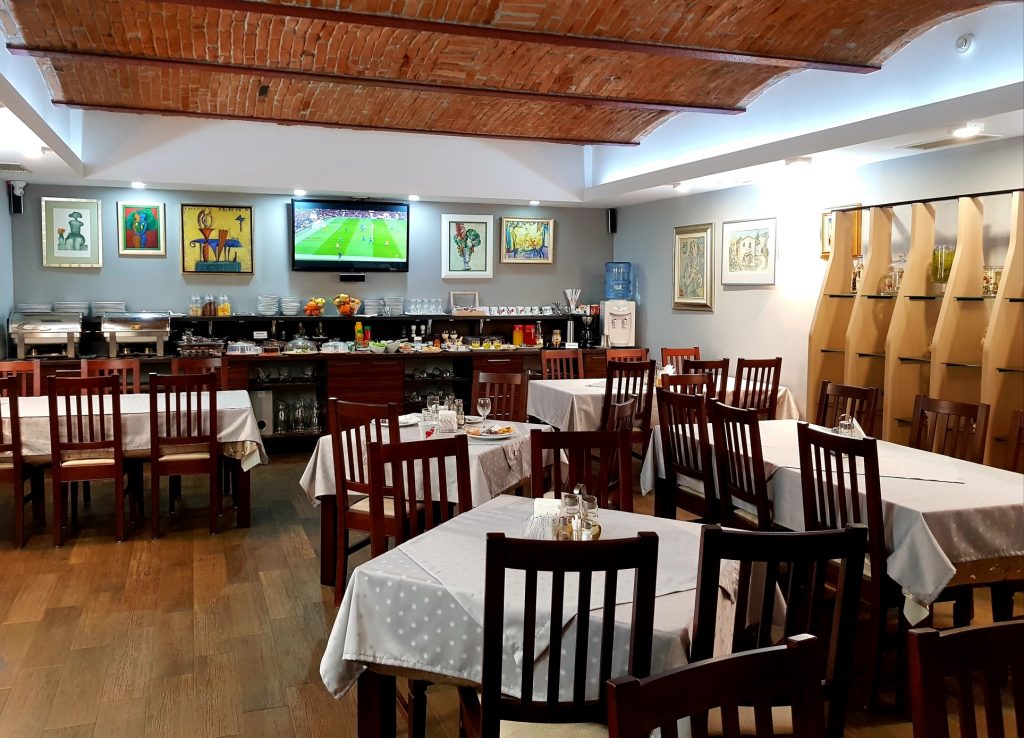Na letalo vstopiva zadnja in ker je vrsta pred najinima sedežema popolnoma prazna, se mi na usta prikrade zmagovalni nasmešek. Hitro se prestavim, z oblačili in torbico zasedem vse ostale sedeže, zaprem oči in počakam na vzlet. A zaspati ne morem niti po tem, ko se znak za varnostne pasove obarva zeleno in se lahko udobneje namestim. Misel na Indijo me zapolni z občutkom strahu pred neznanim. Nelagodje me pravzaprav spremlja že vse od trenutka, ko sva se odločila, da počitnice na Maldivih združiva s »skokom« do Agre. Od takrat naprej sem iz vsaj desetih različnih virov slišala: »V Indijo gresta? Sta se cepila? Tam vsak zboli. Tam je taka svinjarija, da se je ne da opisati!« Kaj mi je tega treba bilo, premlevam v svoji glavi. Vendar točno vem kaj, oziroma zakaj. Želim videti veliki Tadž Mahal.
K sreči je let do Delhija relativno kratek. Ob izstopu iz letala prvič vdihnem smog, ki se zaradi svoje gostote neverjetno hitro infiltrira v vse pore mojega telesa. Roke si namažem z antibakterijskim gelom (s seboj sem prinesla kar 3), čez usta in nos pa si refleksno poveznem šal. Ko stojimo v vrsti za vstop v državo, živčno opazujem ostale potnike in si v mislim rišem scenarije, kako bom naslednjih 10 dni preživela na razmajani postelji v bolniški sobi brez klime. Vendar nelagodje izgine v trenutku, ko ob izstopu zagledam brkatega šoferja s transparentom, na katerem je moje ime. Okoli vratu nama nadene ogrlici iz svežih rož in nama z dobrodušnim piškavim nasmehom reče: »Dobrodošla v Indiji.«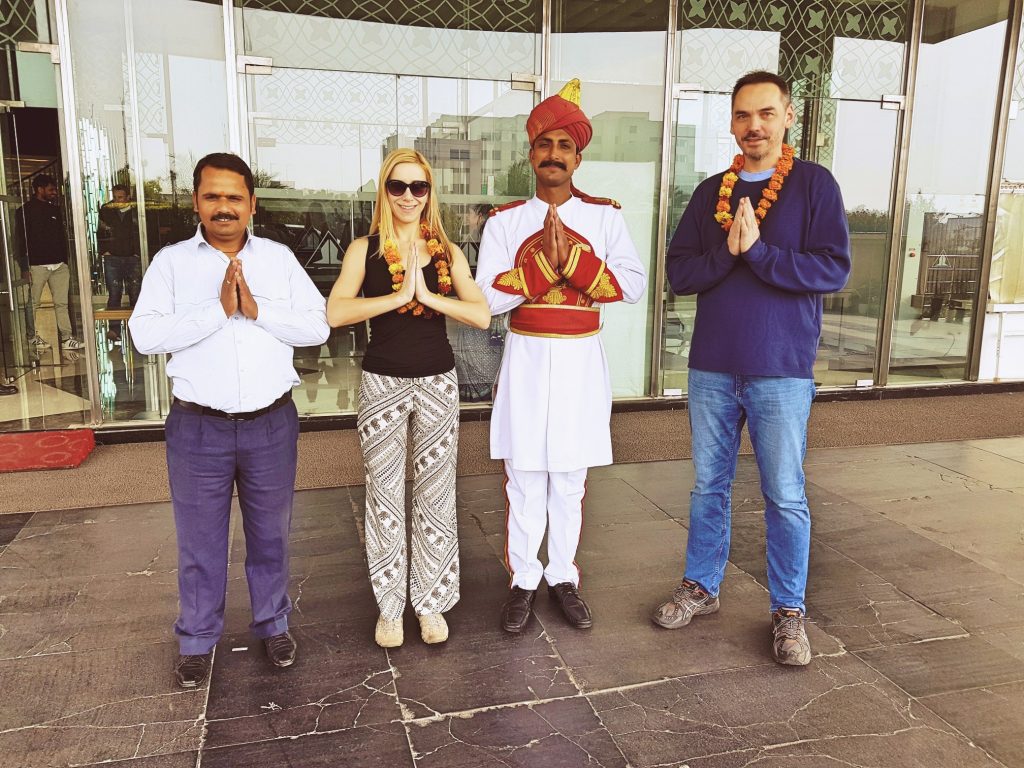
Pot do Agre in prvi stik z realnostjo
Pot do Agre, ki je iz Delhija oddaljena 230 kilometrov, traja dobre 4 ure. Ko se počasi izvijamo iz mestne gneče, postaja smog vse redkejši, pokrajina pa vse bolj pomirjujoča. Na neskončnih zelenih poljih je občasno opaziti nekaj ljudi in številne manjše templje, ki pričajo o globoki verski pripadnosti. Kar 75 odstotkov prebivalcev Indije je namreč hindujcev, sledijo muslimani, kristjani in ostale verske manjšine. Hinduizem se navzven odraža v načinu oblačenja, nošenja nakita in telesnih poslikavah. Ženske imajo v Indiji praviloma pokrita ramena in spodnji del telesa, v ruralnih predelih bolj zaradi tradicije, v mestih pa predvsem zaradi nadlegovanja in žal tudi visokega števila posilstev. Kljub vse bolj glasnim javnim protestom in prizadevanjem vlade za preprečevanje nasilja, je Delhi še vedno eno izmed najnevarnejših mest za nežnejši spol.
Po približno polovici poti šofer zavije z avtoceste in parkira pred navzven dokaj urejeno stavbo. »Vi kava in stranišče«, se nasmeji. Prvi stik z realnostjo, torej. Pred vhodom na stranišče čaka gospodična, ki mi ponudi papirnato brisačo in v zameno pričakuje nekaj drobiža. Iz umivalnika se komaj nakaplja toliko vode, da si umijem roke. Vonj, ki se vije iz toaletnih prostorov vse do kavomata, me odvrne od vsake želje po hrani in pijači. Roke si izdatno namažem z gelom za dezinfekcijo, spijem vodo iz plastenke, ki sva jo kupila na letališču in upam, da bo zalega do prihoda v hote.
Ko z avtoceste zavijemo proti Agri, se začnejo med avtomobile prerivati motoristi, rikše in kolesarji, ki našo vožnjo tako upočasnijo, da si lahko podrobno ogledam dogajanje okoli sebe. To so prizori, ki jih ne bom pozabila nikoli. Ceste, prekrite z blatom in živalskimi iztrebki, nepregledni kupi smeti na vseh koncih in krajih, v zraku pa smog in črn dim, ki se vali iz številnih opekarn in ognjišč. Med stojnicami, kjer kuhajo hrano, popravljajo avtomobilske dele, sušijo perilo in izdelujejo orodje, se nemoteno sprehajajo krave, psi in druge domače živali. Napol dokončane stavbe dajejo vtis, kot da se bodo ravnokar sesedle same vase, kabelska napeljava med njimi pa je prepletena v srhljiv labirint, ki bi v zadrego spravil tudi najboljšega strokovnjaka za elektriko. Kadar se avto zaradi gneče popolnoma ustavi, pritečejo otroci, ki nam skušajo na vsak način nekaj prodati. Še ena bogata turistka, ki bo iz sočutja odprla okna avtomobila, je razbrati iz njihovih nagajivih oči.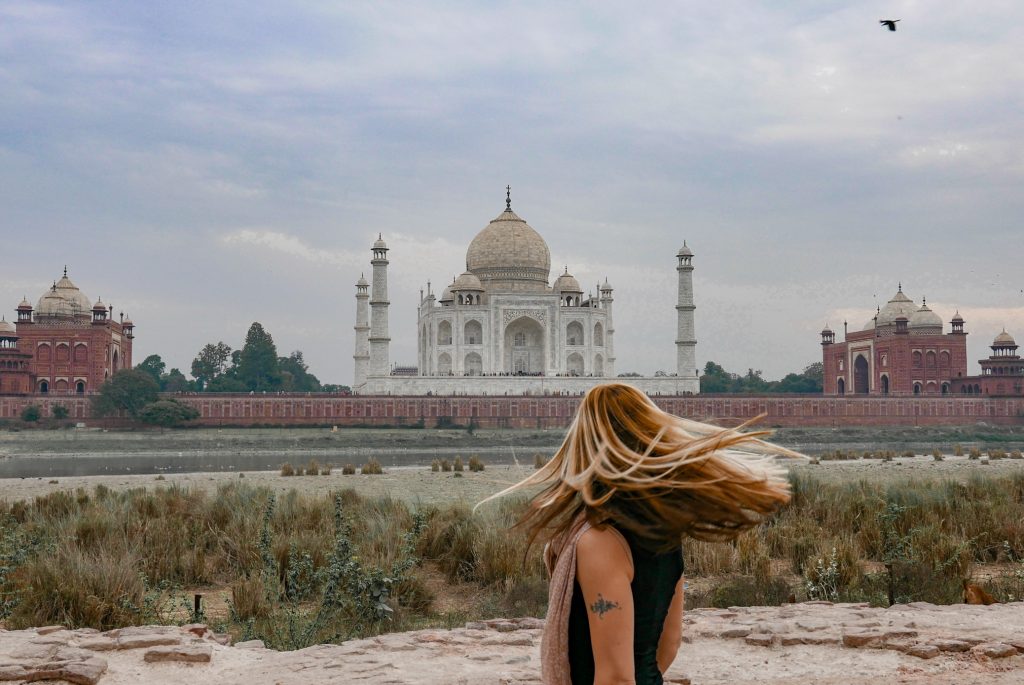
Beli velikan na drugi strani reke
Šofer zapelje do vrste malo bolje urejenih šotorov, ki ponujajo spominke in pijačo v plastenkah. Ustavi avto in reče: »Tukaj Mehtab Bagh, vrt. Tam vstopnina, jaz čakam tukaj.« Začudena se spogledava, saj za današnji dan nimava načrtovanega nobenega ogleda. Odpraviva se do vhoda, ki vodi v nasad nizkega drevja. V vrtu ni veliko ljudi in ravno, ko se začnem spraševati, kaj je imel šofer za bregom, v daljavi opazim belega velikana. Tadž Mahal, ki sva ga nameravala obiskati šele naslednji dan, je od naju ločen le z reko. Pogled nanj je tako presunljiv, da me ne zmoti niti oblačno nebo, zaradi katerega bom prikrajšana za čarobni odsev sončnega zahoda. Veličastno marmorno gmoto z obeh strani simetrično obdajata dve rdeči stavbi – kot bi želeli zajeziti mravljišče ljudi, ki okoli njunega varovanca lovijo zadnje trenutke dneva. Jutri zjutraj bova na njunem mestu midva. Še ena izmed več deset tisoč turistov, ki Tadž Mahal obiščejo vsak dan. Za trenutek se vprašam, ali ni morda bolje, da mi v spominu ostane ta impresivna podoba sredi tišine, kot pa da se prerivam v množici za tisto fotografijo, ki jo bodo tako in tako skazili nepovabljeni gostje.
Tadž Mahal se za obiskovalce odpre ob sončnem vzhodu, zato se naslednje jutro še v temi odpraviva do enega izmed njegovih treh vhodov. Na srečo prispeva med prvimi in ker s seboj nimava nobenega nahrbtnika, se zelo hitro premakneva mimo varnostnikov do vrat, ki vodijo do njegovega veličanstva. Ko si prvič zreva iz oči v oči, v trenutku pozabim na tistih nekaj turistov, ki že nastavljajo svoje bliskavice in iščejo najboljši kotiček za fotografijo. Pred mano je veliki Tadž Mahal, eno izmed sedmih čudes novodobnega sveta.
Brezčasen spomenik izgubljeni ljubezni
Od blizu je Tadž Mahal še lepši. Do njega vodi čudovit vodni park, v katerem se elegantno zrcali odsev belih kupol. Vse okoli njega je popolna simetrija, ki daje vtis, da niti en sam detajl ni tam po naključju. Vtis, da je bila ta izjemna stvaritev načrtovana z veliko strastjo in da se za njenim nastankom skriva veličastna zgodba. Zgodba, ki je za seboj pustila brezčasen spomenik izgubljeni ljubezni. Zgodba, ki buri srca in domišljijo obiskovalcev že vse od 17. stoletja.
Tadž Mahal je namreč mavzolej, posvečen največji ljubezni mogulskega šaha Džahana. Mumtaz Mahal, perzijska princesa, s katero je bil poročen 19 let, in je bila njegova tretja žena, ni bila zgolj lepa – zaradi svoje čustvene in umske inteligence je imela velik vpliv na šahove odločitve, spremljala pa ga je celo na njegovih osvajalskih pohodih. Njuno ljubezensko zgodbo je pretrgala kruta usoda ob porodu njunega 14. otroka. Ker je Mumtaz čutila, da ga ne bo preživela, je med porodom k sebi poklicala moža in mu tik pred smrtjo zaupala svoje zadnje želje: da bi poskrbel za njune otroke, da se po njeni smrti ne bi nikoli več poročil in da bi zgradil spomenik, ki bo pričal o njuni veliki ljubezni. Po dveh letih globokega žalovanja je šah Džahan lokacijo ob reki Džamuna (navdih zanjo je dobil ravno ob pogledu z vrta Mehtab Bagh) odkupil od tamkajšnjega maharadže in za gradnjo angažiral strokovnjake z vsega sveta. Pri snovanju in izvedbi mavzoleja je sodelovalo 20.000 delavcev, njegova gradnja je potekala celih 22 let, zanjo pa je šah, preračunano v današnje vrednosti, plačal skoraj 700 milijonov evrov.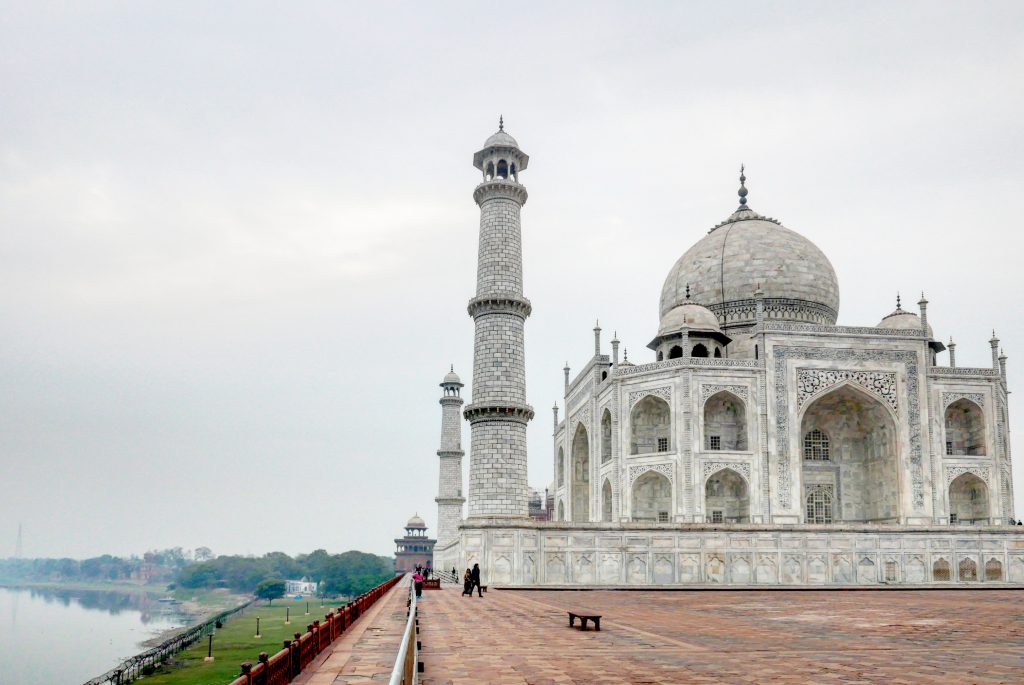
Tadž Mahal, katerega ime je izpeljanka naziva šahove žene in pomeni kraljeva palača, je zgrajen iz belega marmorja, ki spreminja svojo barvo pod vplivom sončnih žarkov. Vanj so vklesani dragi kamni, ki tvorijo podobe lilij, vrtnic in lotusov. Zaradi loma svetlobe je njegova podoba veličastna v vseh letnih časih in v vsakem delu dneva. Osrednji del predstavlja grobnica, ki je obdana s štirimi vitkimi stolpi. Le-ti so rahlo nagnjeni navzven, da se v primeru potresa ne bi zrušili v notranjost. Levo in desno od grobnice stojita dve mošeji iz kontrastno rdečega kamna, pri čemer je le ena prava, namenjena molitvi, druga pa je tam zgolj zaradi simetrije. Celoten kompleks obdaja visok zid, ki Tadž Mahal skoraj popolnoma zakrije pred nezaželenimi pogledi.
Mojstrovina z eno samo napako
Kljub skrbno načrtovani zasnovi pa ima ta arhitekturna mojstrovina eno napako. Edina nesimetrija v celotnem kompleksu je skrita v grobnici, a zanjo šah Jahan ni nikoli izvedel. Kasneje je namreč načrtoval gradnjo identične, a v črn marmor odete grobnice na drugi strani reke, ki bi jo povezal z mostom, tako da bi bila po njegovi smrti z njegovo ljubljeno zopet združena. Žal mu je načrte pretrgal krut boj za njegovo nasledstvo. Šah je tako zadnja leta svojega življenja preživel kot ujetnik v bližnji trdnjavi, kjer je, kot pravi legenda, skozi majhno okno vsak dan od daleč opazoval grob ljubljene žene. Po njegovi smrti so ga pokopali v Tadž Mahalu, njegovo krsto pa so postavili ob levi bok njegove drage. In to je edini element, ki ruši simetrijo tega sicer popolnega kompleksa.
Navdih za popotnike in umetnike
Leta 1983 je bil Tadž Mahal vpisan na seznam UNESCO-ve svetovne dediščine kot mojstrovina, ki združuje oblikovalsko tradicijo perzijske in mogulske arhitekture in predstavlja simbol bogate indijske zgodovine. Spomenik velike ljubezni je postal navdih za popotnike, znanstvenike, fotografe in umetnike z vsega sveta. Odkar se je leta 2007 uvrstil med 7 novih svetovnih čudes, ga letno obišče okoli sedem milijonov ljudi, ob vikendih in praznikih pa tudi po 70.000 dnevno. Zato ga je najbolje obiskati izven sezone, tik ob sončnem vzhodu. Takrat je še mogoče najti miren kotiček in ga spoštljivo opazovati z daljave, kako se, kot je lepo zapisal indijski pesnik Rabindranatha Tagora, dviga iznad reke kot osamljena solza na licu časa.
Namigi za popotnike
- Za vstop v Indijo potrebujemo vizo, ki jo dobimo na internetu in stane okoli 50€
- Vstopnina v Tadž Mahal je 13€ na osebo
- Več fotografij lahko najdete v mojem Facebook albumu
- Najboljši čas za obisk je zgodnja pomlad in pozna jesen, ko so temperature še vedno dovolj prijetne
- Večina popotnikov Tadž Mahal obišče v sklopu »Zlatega trikotnika«, v katerega poleg Agre sodita še mesti Džaipur in Delhi.
- Pred potovanjem se pravočasno posvetujte o cepljenjih in zdravilih, ki jih je dobro vzeti s sabo.
